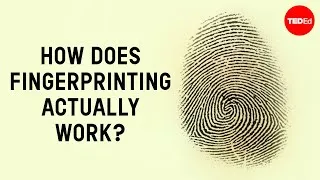请双击下面的英文字幕来播放视频。
翻译人员: Felix Chen
校对人员: Chunxiang Qian
00:15
Today I'd like to show you
0
15260
2000
今天我想向各位展示
00:17
the future of the way we make things.
1
17260
2000
未来我们制作东西的方式。
00:19
I believe that soon our buildings and machines
2
19260
2000
我相信很快我们的建筑和机器
00:21
will be self-assembling,
3
21260
2000
将能自我组装,
00:23
replicating and repairing themselves.
4
23260
2000
自我复制和自我修复。
00:25
So I'm going to show you
5
25260
2000
因此我要向各位展示
00:27
what I believe is the current state of manufacturing,
6
27260
2000
我所认为的制造业的当前状况,
00:29
and then compare that to some natural systems.
7
29260
3000
接着再将其与一些自然系统比较。
00:32
So in the current state of manufacturing, we have skyscrapers --
8
32260
3000
那么在当前的制造业中,我们有摩天大楼 ——
00:35
two and a half years [of assembly time],
9
35260
2000
两年半的时间,
00:37
500,000 to a million parts,
10
37260
2000
50万至上百万个部分,
00:39
fairly complex,
11
39260
2000
非常复杂,
00:41
new, exciting technologies in steel, concrete, glass.
12
41260
3000
使用了在钢铁,混凝土和玻璃方面的新技术。
00:44
We have exciting machines
13
44260
2000
我们有令人激动的机器,
00:46
that can take us into space --
14
46260
2000
可以带我们进入太空——
00:48
five years [of assembly time], 2.5 million parts.
15
48260
3000
五年时间,两百五十万个部分。
00:51
But on the other side, if you look at the natural systems,
16
51260
3000
但另一方面,如果看看自然系统,
00:54
we have proteins
17
54260
2000
我们有拥有两百万种类型的
00:56
that have two million types,
18
56260
2000
蛋白质,
00:58
can fold in 10,000 nanoseconds,
19
58260
2000
能在一万纳秒内折叠起来,
01:00
or DNA with three billion base pairs
20
60260
2000
我们能在大约一小时内
01:02
we can replicate in roughly an hour.
21
62260
3000
对带有三十亿碱基对的DNA进行复制。
01:05
So there's all of this complexity
22
65260
2000
这就是我们
01:07
in our natural systems,
23
67260
2000
自然系统的复杂性,
01:09
but they're extremely efficient,
24
69260
2000
但它们非常高效,
01:11
far more efficient than anything we can build,
25
71260
2000
比我们建造的任何东西都要高效,
01:13
far more complex than anything we can build.
26
73260
2000
比我们能建造的任何东西都要复杂。
01:15
They're far more efficient in terms of energy.
27
75260
2000
它们在能源方面更加高效。
01:17
They hardly ever make mistakes.
28
77260
3000
它们很少犯错。
01:20
And they can repair themselves for longevity.
29
80260
2000
他们能自我修复保持长寿。
01:22
So there's something super interesting about natural systems.
30
82260
3000
关于自然系统有件超级有意思的事情。
01:25
And if we can translate that
31
85260
2000
如果我们能将其
01:27
into our built environment,
32
87260
2000
转换为我们的建筑环境,
01:29
then there's some exciting potential for the way that we build things.
33
89260
2000
那么我们构建事物的方式就会有很大的潜力。
01:31
And I think the key to that is self-assembly.
34
91260
3000
我认为关键是自我组装。
01:34
So if we want to utilize self-assembly in our physical environment,
35
94260
3000
如果我们想要在自身的身体环境中利用自我组装,
01:37
I think there's four key factors.
36
97260
2000
我认为有四个关键因素。
01:39
The first is that we need to decode
37
99260
2000
第一个是,我们需要解码
01:41
all of the complexity of what we want to build --
38
101260
2000
我们所要建造的东西的所有的复杂度 ——
01:43
so our buildings and machines.
39
103260
2000
也就是我们的建筑和机器。
01:45
And we need to decode that into simple sequences --
40
105260
2000
我们需要把它们解码成简单的序列 ——
01:47
basically the DNA of how our buildings work.
41
107260
2000
基本上就是我们的建筑运作的DNA。
01:49
Then we need programmable parts
42
109260
2000
接着我们需要可编程的部分
01:51
that can take that sequence
43
111260
2000
这部分能接受这一序列
01:53
and use that to fold up, or reconfigure.
44
113260
3000
并用于折叠或是重塑。
01:56
We need some energy that's going to allow that to activate,
45
116260
3000
我们需要一些能量来进行激活,
01:59
allow our parts to be able to fold up from the program.
46
119260
3000
使我们的这些部分能够依照程序折叠起来。
02:02
And we need some type of error correction redundancy
47
122260
2000
我们需要一些类型的纠错冗余
02:04
to guarantee that we have successfully built what we want.
48
124260
3000
以保证我们成功建造的就是我们想要的。
02:07
So I'm going to show you a number of projects
49
127260
2000
因此,我要向各位展示一些
02:09
that my colleagues and I at MIT are working on
50
129260
2000
我和我的同事正在进行的
02:11
to achieve this self-assembling future.
51
131260
2000
要实现这种自我组装的未来的项目。
02:13
The first two are the MacroBot and DeciBot.
52
133260
3000
头两个项目是MacroBot和DeciBot。
02:16
So these projects are large-scale reconfigurable robots --
53
136260
4000
这些项目都是大规模可重构机器人 ——
02:20
8 ft., 12 ft. long proteins.
54
140260
3000
8英尺,12英尺长的蛋白质。
02:23
They're embedded with mechanical electrical devices, sensors.
55
143260
3000
它们嵌入机电设备,传感器。
02:26
You decode what you want to fold up into,
56
146260
2000
你需要把想要折叠的方式解码成,
02:28
into a sequence of angles --
57
148260
2000
解码成一系列角度 ——
02:30
so negative 120, negative 120, 0, 0,
58
150260
2000
负120度,负120度,0度,0度,
02:32
120, negative 120 -- something like that;
59
152260
3000
120度,负120度,——这类的东西;
02:35
so a sequence of angles, or turns,
60
155260
2000
一系列角度,或转向,
02:37
and you send that sequence through the string.
61
157260
3000
可以用电线把这个次序传过去。
02:40
Each unit takes its message -- so negative 120 --
62
160260
3000
每个单元获取自己的消息 —— 比如负120.
02:43
it rotates to that, checks if it got there
63
163260
2000
它进行旋转,检查是否旋转到位
02:45
and then passes it to its neighbor.
64
165260
3000
然后把序列传给它的邻居。
02:48
So these are the brilliant scientists,
65
168260
2000
有许多杰出的科学家,
02:50
engineers, designers that worked on this project.
66
170260
2000
工程师,设计师为这个项目工作。
02:52
And I think it really brings to light:
67
172260
2000
我认为这一项目真的揭示出:
02:54
Is this really scalable?
68
174260
2000
这真的可扩展么?
02:56
I mean, thousands of dollars, lots of man hours
69
176260
2000
我是说,花费数千美元许多人时
02:58
made to make this eight-foot robot.
70
178260
3000
来制造这个八英尺的机器人。
03:01
Can we really scale this up? Can we really embed robotics into every part?
71
181260
3000
我们真的能扩大它么?我们真的能在每个部分中都嵌入机器人么?
03:04
The next one questions that
72
184260
2000
下一个问题是
03:06
and looks at passive nature,
73
186260
2000
看看被动性,
03:08
or passively trying to have reconfiguration programmability.
74
188260
3000
或被动地尝试让重组具有可编程性。
03:11
But it goes a step further,
75
191260
2000
但它更进了一步,
03:13
and it tries to have actual computation.
76
193260
2000
它尝试进行实际计算。
03:15
It basically embeds the most fundamental building block of computing,
77
195260
2000
基本上嵌入了多数计算的基础构建模块,
03:17
the digital logic gate,
78
197260
2000
数字逻辑门,
03:19
directly into your parts.
79
199260
2000
直接进入各个部分。
03:21
So this is a NAND gate.
80
201260
2000
这是与非门。
03:23
You have one tetrahedron which is the gate
81
203260
2000
每个要用于计算的门上
03:25
that's going to do your computing,
82
205260
2000
都有一个四面体,
03:27
and you have two input tetrahedrons.
83
207260
2000
有两个输入四面体。
03:29
One of them is the input from the user, as you're building your bricks.
84
209260
3000
其中一个是来自用户的输入,就像你在构建砖块。
03:32
The other one is from the previous brick that was placed.
85
212260
3000
另一个是来之前前放好的一块砖的输入。
03:35
And then it gives you an output in 3D space.
86
215260
3000
接着它会给出三维空间的输出。
03:38
So what this means
87
218260
2000
这意味着
03:40
is that the user can start plugging in what they want the bricks to do.
88
220260
3000
用户以他们想要的方式堆砌砖块。
03:43
It computes on what it was doing before
89
223260
2000
它依据之前所做的
03:45
and what you said you wanted it to do.
90
225260
2000
和你的指令进行计算。
03:47
And now it starts moving in three-dimensional space --
91
227260
2000
现在它开始在三维空间内移动 ——
03:49
so up or down.
92
229260
2000
上或者下。
03:51
So on the left-hand side, [1,1] input equals 0 output, which goes down.
93
231260
3000
看左面,[1,1] 的输入等于0输出,表示向下。
03:54
On the right-hand side,
94
234260
2000
在右边,
03:56
[0,0] input is a 1 output, which goes up.
95
236260
3000
[0,0] 的输入是1输出,表示向上。
03:59
And so what that really means
96
239260
2000
因此这真正的的意味是
04:01
is that our structures now contain the blueprints
97
241260
2000
我们的结构中现在包含了
04:03
of what we want to build.
98
243260
2000
我们想要构建的蓝图。
04:05
So they have all of the information embedded in them of what was constructed.
99
245260
3000
因此关于想要构建的事物的信息已经全部嵌入其中。
04:08
So that means that we can have some form of self-replication.
100
248260
3000
这意味着我们有了某种形式的自我复制。
04:11
In this case I call it self-guided replication,
101
251260
3000
对这种情况,我称之为自我导向复制,
04:14
because your structure contains the exact blueprints.
102
254260
2000
因为你的结构中包含了精确的蓝图。
04:16
If you have errors, you can replace a part.
103
256260
2000
如果遇到错误,你可以替换一个部分。
04:18
All the local information is embedded to tell you how to fix it.
104
258260
3000
所有的本地信息都嵌入其中,告诉你如何修复它。
04:21
So you could have something that climbs along and reads it
105
261260
2000
因此你有个可以攀爬的东西,能读出它
04:23
and can output at one to one.
106
263260
2000
并一个一个的输出。
04:25
It's directly embedded; there's no external instructions.
107
265260
2000
它是直接嵌入的;没有外部指令输入。
04:27
So the last project I'll show is called Biased Chains,
108
267260
3000
我要展示的最后一个项目名为偏心链条,
04:30
and it's probably the most exciting example that we have right now
109
270260
3000
它可能是我们现在看到的被动自我装配系统中
04:33
of passive self-assembly systems.
110
273260
2000
最令人激动的例子。
04:35
So it takes the reconfigurability
111
275260
2000
它具有可重构性
04:37
and programmability
112
277260
2000
和可编程性
04:39
and makes it a completely passive system.
113
279260
3000
使它成了为了一个完全地被动系统。
04:43
So basically you have a chain of elements.
114
283260
2000
基本上就是你有了一连串的元素。
04:45
Each element is completely identical,
115
285260
2000
每个元素都是完全相同的,
04:47
and they're biased.
116
287260
2000
且它们是偏心的。
04:49
So each chain, or each element, wants to turn right or left.
117
289260
3000
每个链条,或每个元素想要向右转或是向左转。
04:52
So as you assemble the chain, you're basically programming it.
118
292260
3000
如果你要装配链条,需要为它编程。
04:55
You're telling each unit if it should turn right or left.
119
295260
3000
要告诉每个单元是要左转还是右转。
04:58
So when you shake the chain,
120
298260
3000
当你摇动这个链条时,
05:01
it then folds up
121
301260
2000
它就折叠起来
05:03
into any configuration that you've programmed in --
122
303260
3000
编程你所为它编码的任何结构 ——
05:06
so in this case, a spiral,
123
306260
2000
因此这种情况下,一个螺旋体,
05:08
or in this case,
124
308260
3000
火这种情况,
05:11
two cubes next to each other.
125
311260
3000
两个相连的立方体。
05:14
So you can basically program
126
314260
2000
基本上你可以在
05:16
any three-dimensional shape --
127
316260
2000
三维空间内编程 ——
05:18
or one-dimensional, two-dimensional -- up into this chain completely passively.
128
318260
3000
或是一维、二维 —— 这链条是完全被动的。
05:21
So what does this tell us about the future?
129
321260
2000
这向我们预示了怎样的未来呢?
05:23
I think that it's telling us
130
323260
2000
我认为这告诉我们
05:25
that there's new possibilities for self-assembly, replication, repair
131
325260
3000
这些在我们的身体结构、我们的建筑和机器中
05:28
in our physical structures, our buildings, machines.
132
328260
3000
这种自我装配、自我复制和自我修复的可能性。
05:31
There's new programmability in these parts.
133
331260
2000
在这些部分中有新的可编程性。
05:33
And from that you have new possibilities for computing.
134
333260
2000
从中你能获得计算的新可能性。
05:35
We'll have spatial computing.
135
335260
2000
我们将有空间计算。
05:37
Imagine if our buildings, our bridges, machines,
136
337260
2000
想象一下我们的建筑、桥梁、机器,
05:39
all of our bricks could actually compute.
137
339260
2000
所有的砖块都能进行实际计算。
05:41
That's amazing parallel and distributed computing power,
138
341260
2000
多么令人惊奇的并行计算和分布式计算能力和
05:43
new design possibilities.
139
343260
2000
新的设计可能性啊。
05:45
So it's exciting potential for this.
140
345260
2000
这是项令人激动的潜力。
05:47
So I think these projects I've showed here
141
347260
2000
我认为这些我向各位展示的项目
05:49
are just a tiny step towards this future,
142
349260
2000
仅仅是迈向未来的一小步,
05:51
if we implement these new technologies
143
351260
2000
如果我们为一个新的自我组装的世界
05:53
for a new self-assembling world.
144
353260
2000
实现了这些新技术的话。
05:55
Thank you.
145
355260
2000
谢谢。
05:57
(Applause)
146
357260
2000
(掌声)
New videos
关于本网站
这个网站将向你介绍对学习英语有用的YouTube视频。你将看到来自世界各地的一流教师教授的英语课程。双击每个视频页面上显示的英文字幕,即可从那里播放视频。字幕会随着视频的播放而同步滚动。如果你有任何意见或要求,请使用此联系表与我们联系。







